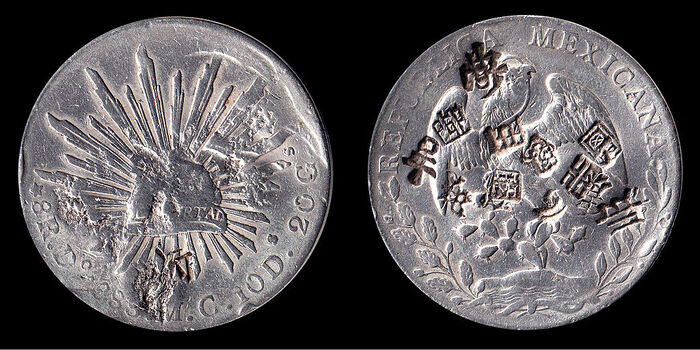Why Is Money in Asia Circles?
In Japan the currency is the yen 円, in China it's the yuan 元, and in Korea it's the won 원, but all mean the same thing: "circle". Why is that? It turns out the answer begins with Spanish silver.
In the 1500s the Spanish dollar became a sort of international trade currency. It was a large coin with relatively high silver content, and Spain's New World colonies and their large silver deposits meant it was available on multiple continents in large quantities. They're the "pieces of eight" favored by pirates; that name comes from their denomination, eight reales, which made chopping them into pieces straightforward.
The coins came to Asia in large quantities because of Chinese trade restrictions - while Chinese silk, porcelain, and other goods were in high demand, China was interested in comparitively few products the West had to offer, with silver being a notable exception. China has few silver deposits, and early Chinese silver coins used metal from Japan before the Spanish coins began to come in through trade, mainly via Manila.
These imported silver coins were called 銀圓 ("silver circles"). Traditionally currency Asia was known by a number of names, but in the 19th century China, Japan, and Korea transitioned to the units they use today. While there are a variety of characters in use now, they all come back to the spanish silver "circles".
Here's an overview of some of the characters used for currency over the years.
- 圓: The old traditional Chinese character, still used in some formal contexts in Japan, and in Taiwan, Hong Kong, and Macau.
- 圆: The simplified Chinese character used in modern China. This is the form actually printed on bills.
- 元: The character commonly used to refer to Chinese yuan in writing. It doesn't mean circle, but has fewer strokes than 圆 and is pronounced the same.
- 円: Japanese simplified form of 圓, the most common form used in writing.
- ¥: symbol for yen and yuan. Created in Japan based on the spelling "yen" and the crossed lines of the dollar symbol $, later adopted in China. This character is notorious for being at the same code point as backslash in Japanese Windows versions. There is also a full-width version, ¥.
- 圜: A variant of the traditional Chinese character historically used in Korea. Currently the official Chinese character for the won is 圓, though it's not used even in formal situations.
- 원: Hangul for won.
- ₩: Symbol for won. Suffers from backslash confusion issues similar to ¥ in Korean versions of Windows.
And that's a round. Ψ
from Hacker News https://ift.tt/31Fhfuh
